The Following by Greg Jericho (published by the Guardian 2 February 2023) shows how Australians are spending less. This signifies a drift downwards in the standard of living, caused by a rising cost of living. This is bad news for most of us and the economy. Greg Jericho is policy director at the Centre for Future Work.
The sharp fall in retail trade is more evidence the Reserve Bank should hold off raising interest rates further
The Australian Bureau of Statistics estimates that retail sales in December fell 3.9%. Photograph: Tim Wimborne/Reuters
The latest retail trade figures came with a bit of a thud. Sales in December fell more than any month outside those involving lockdowns or the introduction of the GST. And it should give the Reserve Bank reason enough to hold off on raising rates next week.
Early last month the Australia Retailers Association suggested that December had been a bumper month in the shops. The head of the ARA, Paul Zahra, said “this is without a doubt the biggest festive season spend on record – it is unprecedented”.
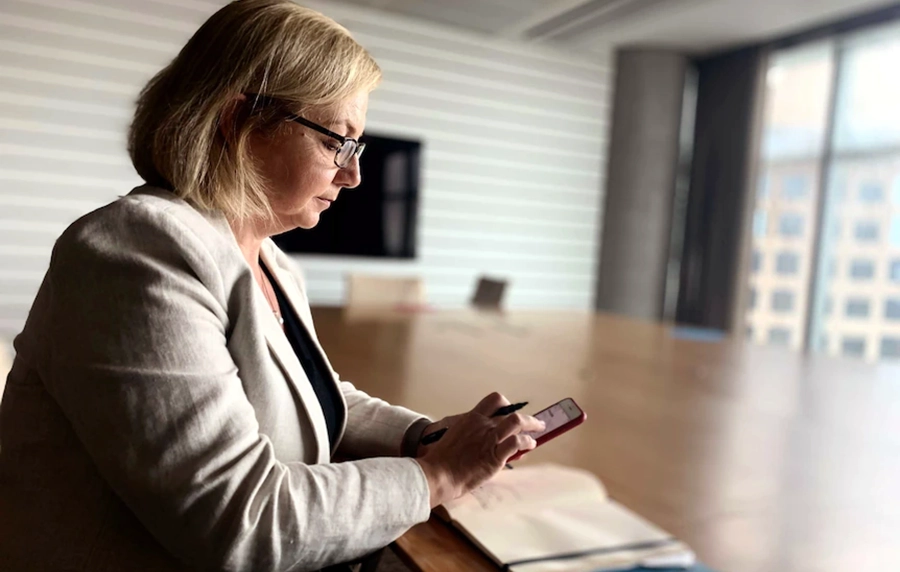
Photo by John Gunn/ABC News
And then the Bureau of Statistics revealed that retail sales in December fell 3.9 percent compared with November.
What is going on?
The answer is a bit nerdy-economics, but worth understanding because retail trade makes up about 20% of GDP (as much as all private sector business investment).
So let’s try to untangle what is happening.
The first thing is that the 3.9% fall is “seasonally adjusted”. This involves adjusting the data because every year certain things affect our spending – especially Christmas.
Last year we spent around 11% of our retail shopping in December. That translates to just over five weeks’ worth of spending in one month. For some sectors, December is even more important. For department stores, December is worth nearly seven weeks of normal shopping.
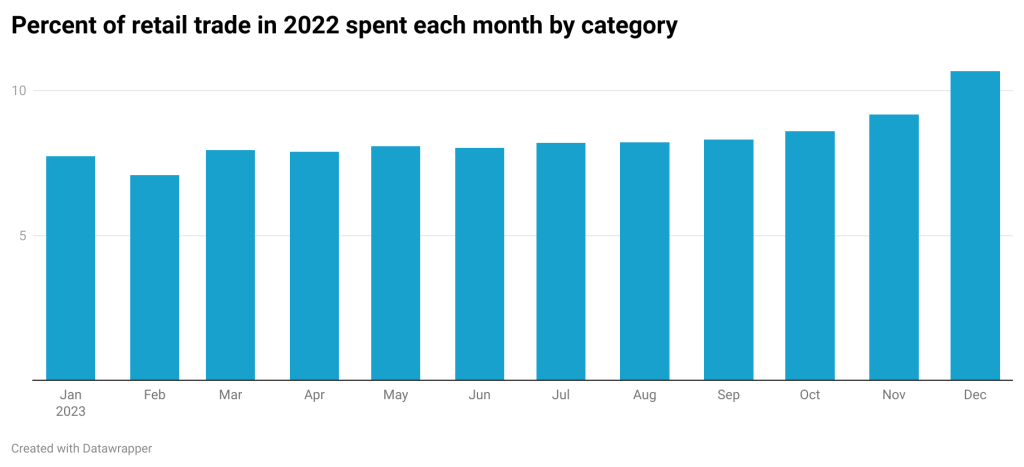
February, on the other hand, is always the month we spend the least. So if you like shopping without crowd, this month is your time to shine.
But this means every year there is always a huge jump in sales from November to December. Last year we actually spent $6.1bn more in December than we did in November – a 16% increase.
But all that figure tells us is that because of Christmas and Boxing Day we spent more in December than November. It’s a bit like saying more people work on Mondays than Sundays and therefore employment went up.
So the ABS adjusts the figures – basically flattening out the peaks and troughs that occur each year:
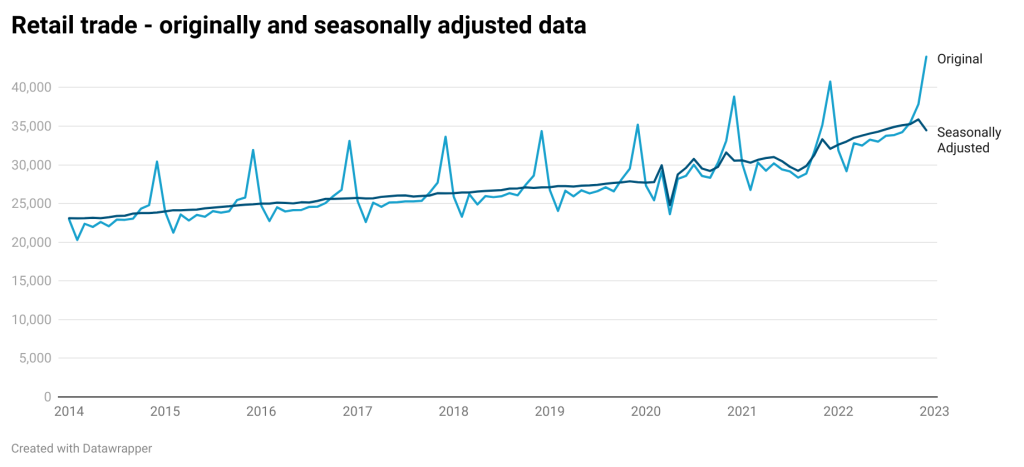
This means we can estimate how sales went up or down given what we know about how we spend money in December.
This is why the ABS estimates retail trade fell 3.9%.
But the other problem is that we’re spending less of our money in December than we used to:
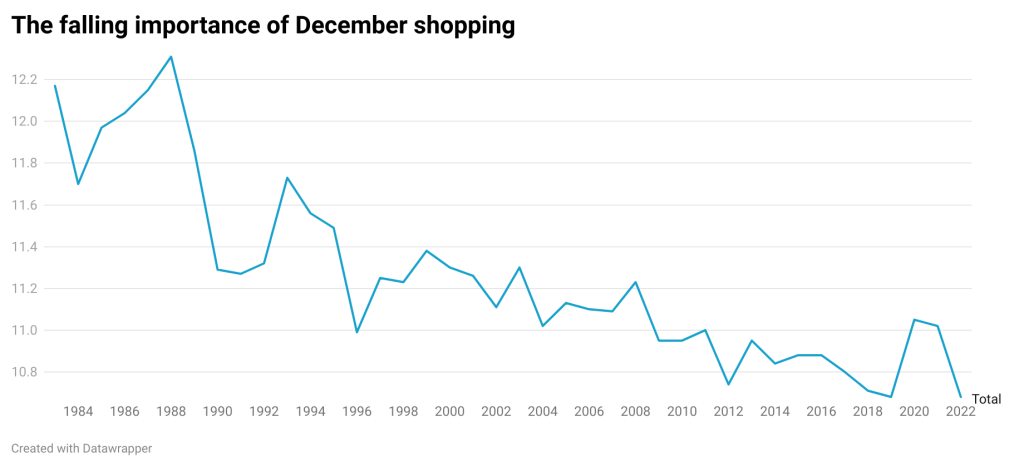
That also affects the accuracy of the estimate.
And then the biggest problem is that the past three years have been completely nuts.
Take a look at the spending on “other retail” (a mix of things like cosmetics, toiletries, games, books and second-hand goods) and dining out. Prior to the pandemic, we roughly spent an equal amount on both categories. Then the shutdowns occurred:
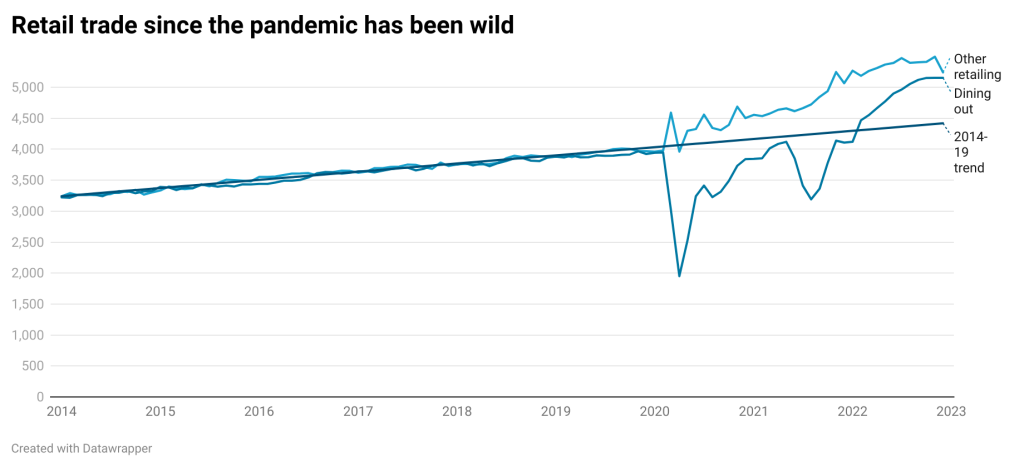
Since the end of the lockdowns, dining out has become very popular and again we are spending about the same amount on both categories.
But we are spending much, much more on both than we did before the pandemic.
Overall retail trade shows a similar picture:
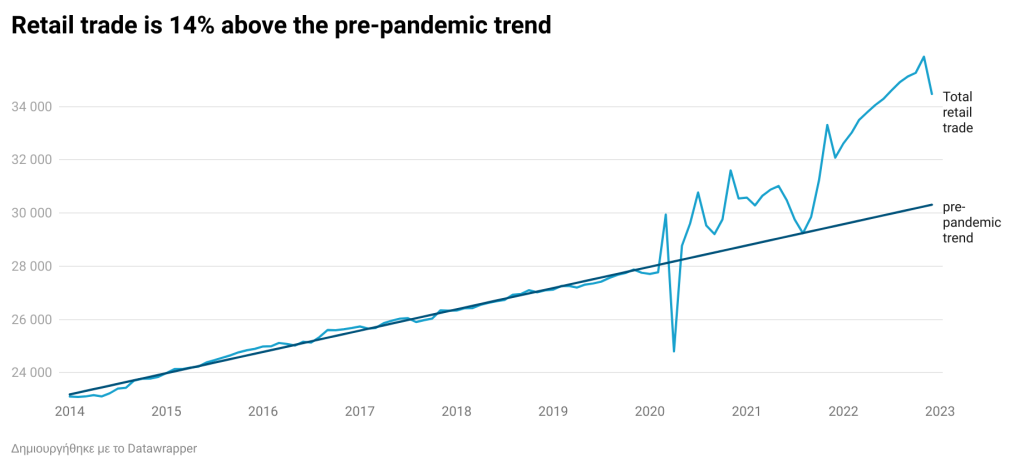
In December retail spending was $4.1bn above what we would have expected had the past three years not had a pandemic. Some of that is due to inflation, much is due to a change in our spending habits.
But there was the big fall in December. Does this signal an end to the retail boom? After all, there was also a big fall in December 2021, but retail trade carried on fine last year.
Monthly figures unfortunately can be erratic. One way to overcome this is to use a three-month rolling average. This gets us closer to the “quarterly” figures that we have for GDP and remove a few monthly ups and downs.
And it shows us that spending has indeed stalled:
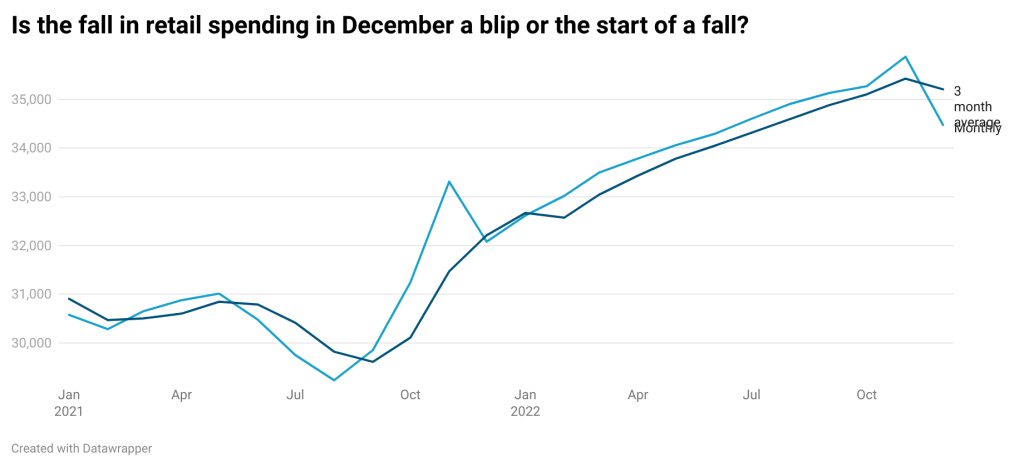
There was a similar stall early last year, but the difference now is that inflation is much higher than then.
In the last three months of 2022 inflation rose 1.9%. That includes the cost of things not included in retail sales, but given the total retail spending in October, November and December was just 0.9% above that in the three months to September, clearly the volume of retail spending (the amount of things we bought) declined.
In effect, the only reason we spent more was because prices rose.
This is not surprising because for many households the cost of other things was rising sharply.
Wednesday’s cost-of-living figures showed that the cost of mortgage interest repayments rose 27% in the December quarter and 61% through 2022.
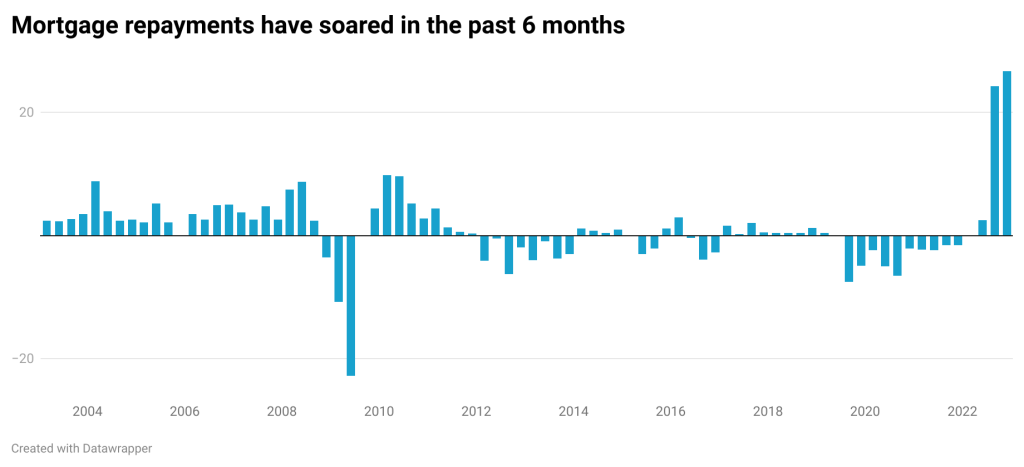
That massive increase in unavoidable expenses inevitably cuts how much you can spend on retail – as indeed the RBA hopes it does.
But that also means the economy can slow very quickly, given the connection of retail spending with employment and other aspects of the economy.
Ahead of next week’s interest rate decision, these retail figures suggest the rate rises are having an impact – possibly a large and acute one.
The sharp December fall may be exaggerated, but it is clear households are having to cut spending as rates rise.
It is just more evidence that the RBA should hold off raising rates to ensure the economy does not stall completely.

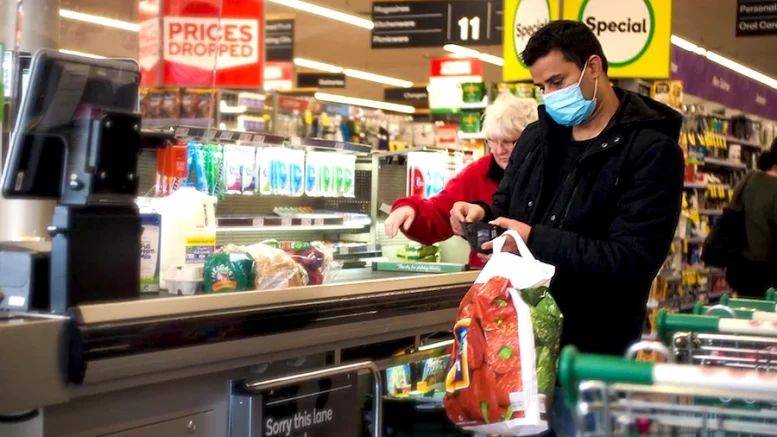
Be the first to comment on "Households are clearly cutting spending as rates rise"